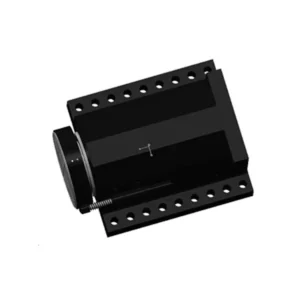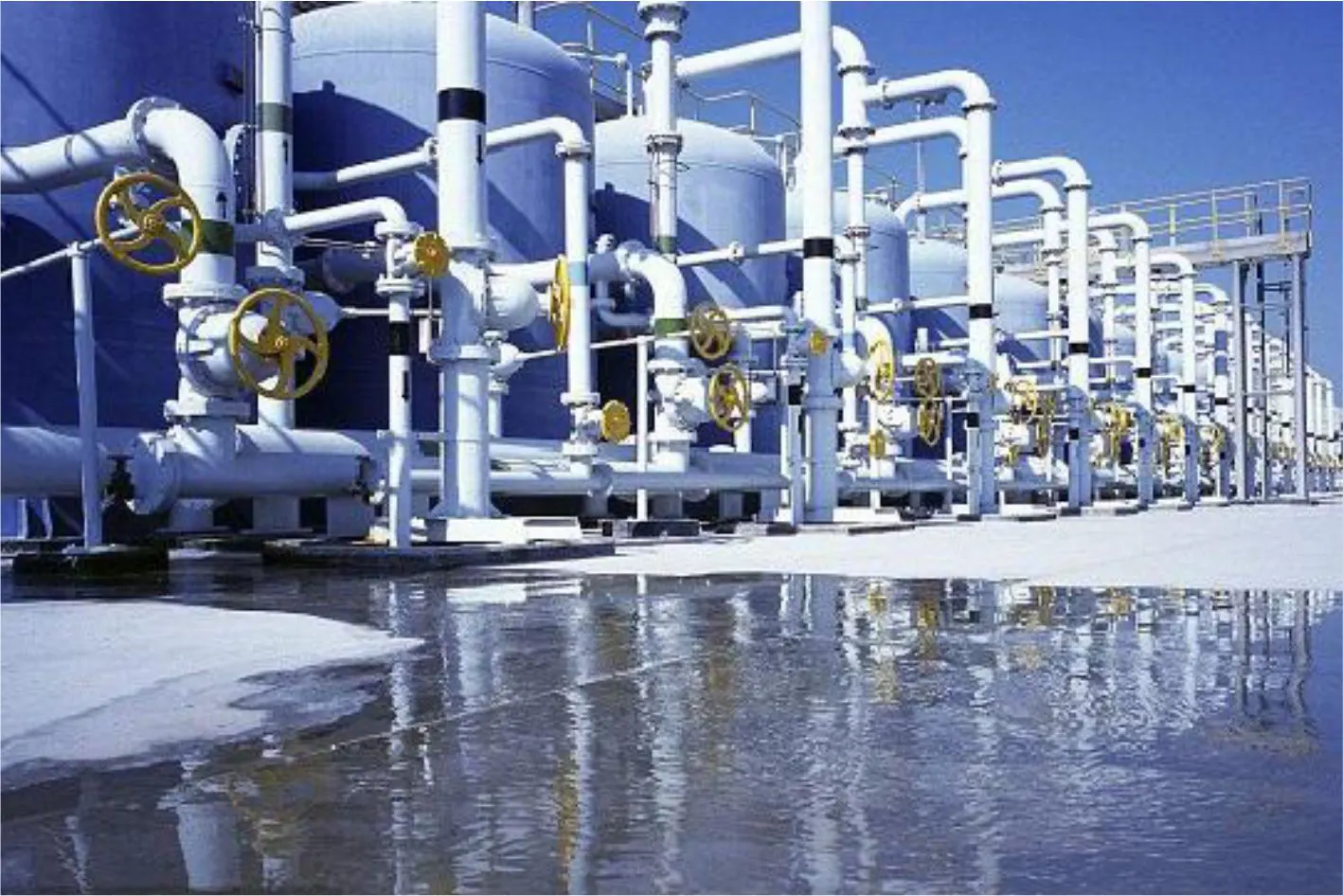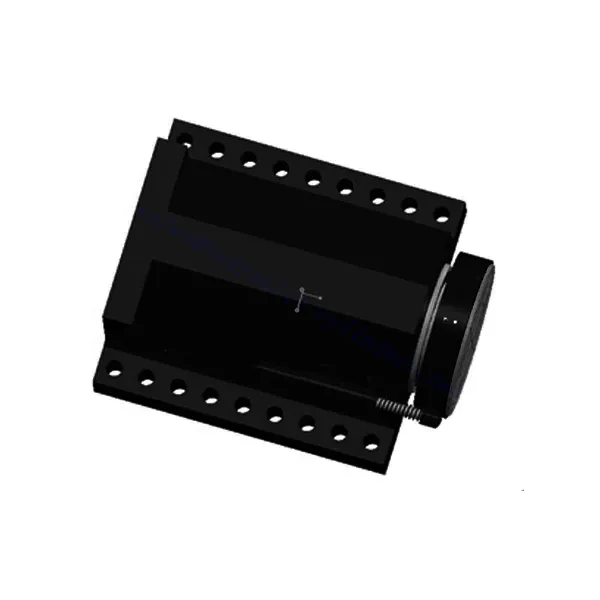Shield Machine Anti-torque Cylinder
Shield Machine Anti-torque Cylinder

The shield machine anti-torque cylinder is a cutting-edge hydraulic component designed to provide enhanced stability and control in tunneling operations. This specialized cylinder plays a vital role in mitigating torque forces generated during the excavation process, ensuring optimal performance and safety. In this comprehensive article, we will delve into the key characteristics, usage methods, and maintenance guidelines for the shield machine anti-torque cylinder.
The shield machine anti-torque cylinder is a cutting-edge hydraulic component that enhances stability and control during tunneling operations. With its torque mitigation capabilities, precise control, robust construction, and compact design, this cylinder ensures safer and more efficient excavation processes. By following the recommended usage methods and adhering to regular maintenance practices, the shield machine anti-torque cylinder will continue to deliver outstanding performance, providing stability, control, and peace of mind in tunneling operations. Elevate your tunneling projects with the stability and control offered by the shield machine anti-torque cylinder.
Shield Machine Articulated Cylinder Key Characteristics:
- Torque Mitigation: The shield machine anti-torque cylinder effectively counteracts torque forces generated by the rotating cutterhead during tunnel excavation. Applying an opposing force helps maintain stability and prevents excessive machine movement, reducing the risk of accidents and enhancing overall operational safety.
- Precise Control: Equipped with advanced hydraulic control systems, this cylinder allows operators to exert precise control over the anti-torque force applied. This level of control enables fine adjustments during tunneling operations, ensuring accurate alignment and minimizing deviations.
- Robust Construction: The shield machine anti-torque cylinder is engineered with high-strength materials to withstand the demanding conditions encountered in tunnel excavation. Its rugged design ensures durability, longevity, and consistent performance, even in harsh environments.
- Compact Design: With a compact and space-efficient design, this cylinder seamlessly integrates into the shield machine, minimizing any additional bulk and maintaining the overall balance and maneuverability of the equipment.
Shield Machine Articulated Cylinder Parameter:
| Product Name | Shield Machine Anti-torque Cylinder |
| Features: | Transmit the torque when the cutter head rotates |
| Bore diameter: | 330mm~570mm |
| Rod diameter: | 260mm~530mm Stroke120mm~160mm |
| Pressure: | Generally up to 35Mpa Maximum up to42MPa |
| Applications: | Shield Machine, Tunnel Boring Machinery |
Shield Machine Thrust Cylinder Application:

Usage Method Of Shield Machine Articulated Cylinder:
- Cylinder Installation: Install the shield machine anti-torque cylinder to the manufacturer’s instructions. Ensure proper alignment and secure attachment to the shield machine’s structure using appropriate mounting brackets or accessories.
- 液压系统集成: Connect the cylinder to the shield machine’s hydraulic system using compatible hoses and fittings. Verify that all connections are secure, leak-free, and adequately tightened to maintain optimal hydraulic performance.
- Operating Controls: Familiarize yourself with the operating controls and mechanisms specific to the Shield Machine Anti-torque Cylinder. Understand how to adjust the anti-torque force applied and practice using the rules to achieve precise and responsive operation.
- Operational Considerations: During tunneling operations, monitor the cutter head’s torque forces and adjust the anti-torque force applied by the cylinder. Continuously evaluate the excavation conditions and adapt the anti-torque settings to maintain stability and control.
How To Bleed A Two Way Hydraulic Cylinder?
Bleeding a two-way hydraulic cylinder is a process that involves removing air from the system to ensure proper operation and prevent issues such as sponginess or reduced performance. A two-way hydraulic cylinder is a double-acting cylinder that uses hydraulic pressure to extend and retract the piston. Here’s a step-by-step guide on how to bleed a two-way hydraulic cylinder:
- Preparation:
- Ensure that the hydraulic system is turned off and the pressure is released.
- Put on personal protective equipment, including gloves and safety glasses, to protect yourself from hydraulic fluid.
- Identify the Bleeder Valve:
- Locate the bleeder valve on the hydraulic cylinder. It’s typically a small fitting with a dust cap. The bleeder valve allows air trapped in the cylinder to escape.
- Extend the Cylinder:
- Activate the hydraulic pump or valve, controlling the cylinder to extend the piston fully. This movement helps any air bubbles rise to the top of the cylinder.
- Remove the Dust Cap:
- Take off the dust cap from the bleeder valve. Set it aside in a safe place.
- Open the Bleeder Valve:
- Using an appropriate wrench or tool, turn the bleeder valve counterclockwise to open it. This allows air and any trapped fluid to escape from the cylinder.
- Retract the Cylinder:
- Release hydraulic pressure and allow the cylinder to retract fully. This may involve activating a control valve or releasing any external force that was holding the cylinder extended.
- Observe Fluid Flow:
- Watch the flow of fluid from the bleeder valve. Initially, you may notice air bubbles coming out along with the fluid. Allow the fluid to flow until there are no more bubbles, indicating that the air has been purged from the cylinder.
- Close the Bleeder Valve:
- Once you’ve eliminated all the air bubbles, close the bleeder valve by turning it clockwise. Ensure it is tightly closed to prevent fluid leakage.
- Extend and Retract the Cylinder:
- Repeat steps 3 to 8, extending and then retracting the cylinder again, to ensure any remaining air is purged from the system. This step helps ensure thorough bleeding of the hydraulic cylinder.
- Check Fluid Level:
- After bleeding the cylinder, check the hydraulic fluid level in the system’s reservoir. Add fluid if necessary to maintain the recommended level.
工厂的能力和产能:
(1) 装配
我们拥有一流的自主研发装配平台。液压油缸生产车间拥有 4 条半自动提升油缸装配线和 1 条全自动倾斜油缸装配线,设计年生产能力 100 万支。特种油缸车间配备了各种规格的半自动清洗装配系统,设计年生产能力 20 万只,并配备了知名数控加工设备、加工中心、高精度油缸加工专用设备、机器人焊接机、自动清洗机、油缸自动装配机、自动喷漆生产线等。现有关键设备 300 多台(套)。设备资源的优化配置和高效利用,保证了产品的精度要求,满足了产品的高质量需求。


(2) 机加工
加工车间配备了定制的斜轨车削中心、加工中心、高速珩磨机、焊接机器人及其他相关设备,可加工最大内径 400 毫米、最大长度 6 米的气缸管。

(3) 焊接

(4) 油漆和涂料
配备中小型圆筒自动水性漆喷涂线,实现机器人自动上下料和自动喷涂,设计产能为每班 4000 件;
我们还拥有一条由动力链驱动的大型油缸半自动喷漆生产线,设计产能为每班 60 箱。


(5) 测试
我们拥有一流的检验设施和试验台,确保气缸的性能符合要求。

We are one of the best hydraulic cylinder manufacturers. We can offer comprehensive hydraulic cylinders. We also provide corresponding 农用齿轮箱. We have exported our products to clients worldwide and earned a good reputation because of our superior product quality and after-sales service. We welcome customers at home and abroad to contact us to negotiate business, exchange information, and 与我们合作!
参观我们的 VR 工厂
通过以下方式参观我们的 VR 工厂
叉车液压缸如何工作?
液压缸应用:


